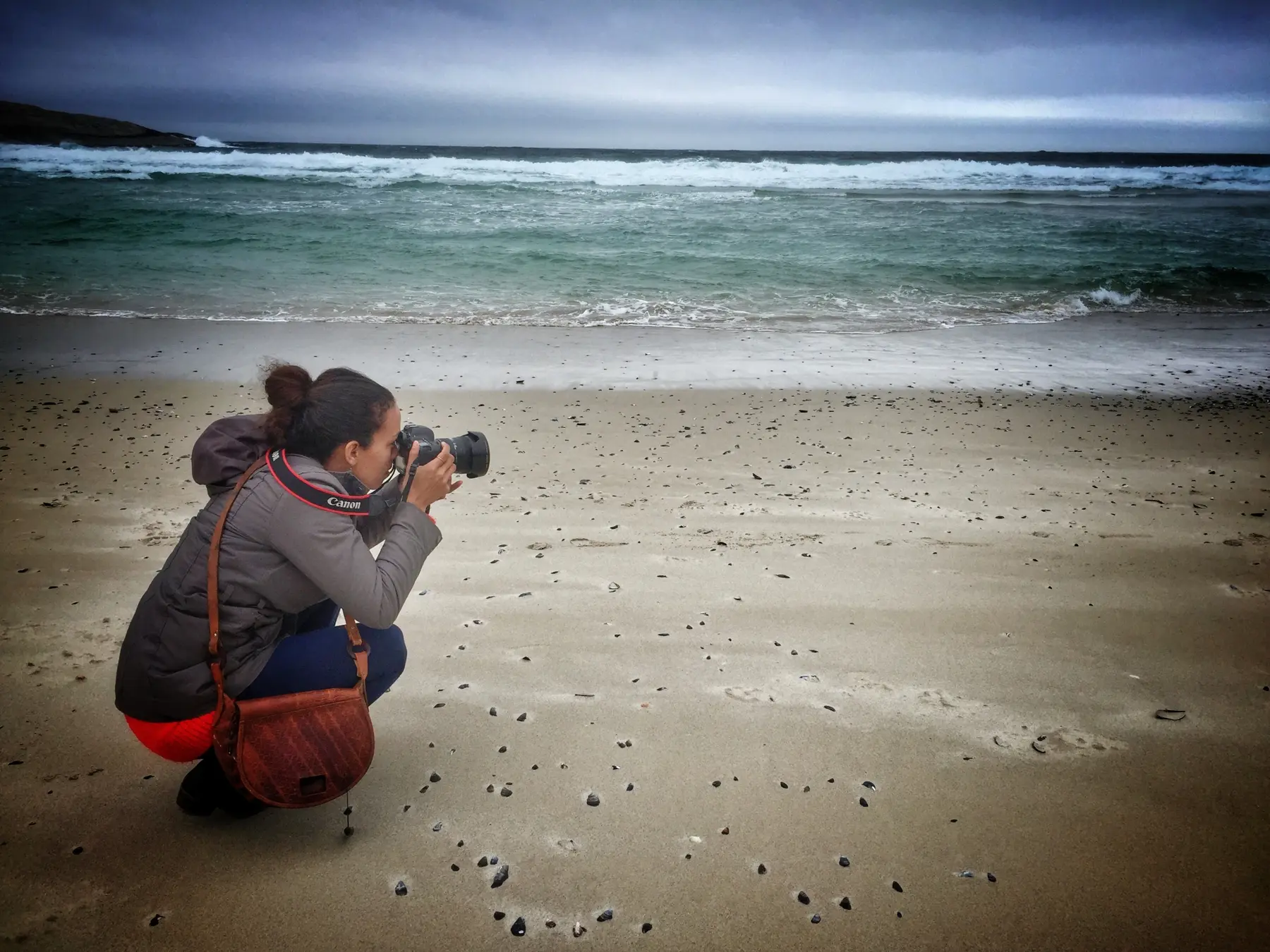Lauren, my travel partner, grabs onto her jacket as she gets out of the car in the Llanduduno parking lot. We are on a insiders guide styled treasure hunt around the Atlantic Seaboard with CheapflightsExplorers and the rain is quickly closing in on us as we try to make our way to our first location. This small little village blue flag beach is found down a winding road along the Atlantic seaboard of Cape Town. It’s only a meagre 200 meters long and the parking lot can, at best, squeeze in 35 cars, but that does not stop hoards of locals and tourists descending down the hills laden with dogs, kids, fire poi balls and mountains of beach paraphernalia. It’s a circus in summer and being a devoted hermit of personal space this little hamlet does not cut the mustard with me during peak seasons. Fortunately, today is balmy winter perfection; rain squalls rolling in over Camps Bay, the sea a clean, deep blue and most importantly, no crowds. “I should have bought a beanie along,” Lauren shouts over the Southwester. She’s on point, this wind is biting though the layers of clothes. Luckily the topography comes to our rescue, the sloping stairs down to the beach quickly gets a little bit of a sweat going and in no time I barely feel any of the cold. Llandudno is an incredibly picturesque beach, a hidden cove of perfectly white sand framed by large granite boulders looming out of the rough sea waters. Sitting south is Cape Towns only nudist beach, Sandy bay, incase you were ever wondering where to suntan in the buff, for whatever reason.
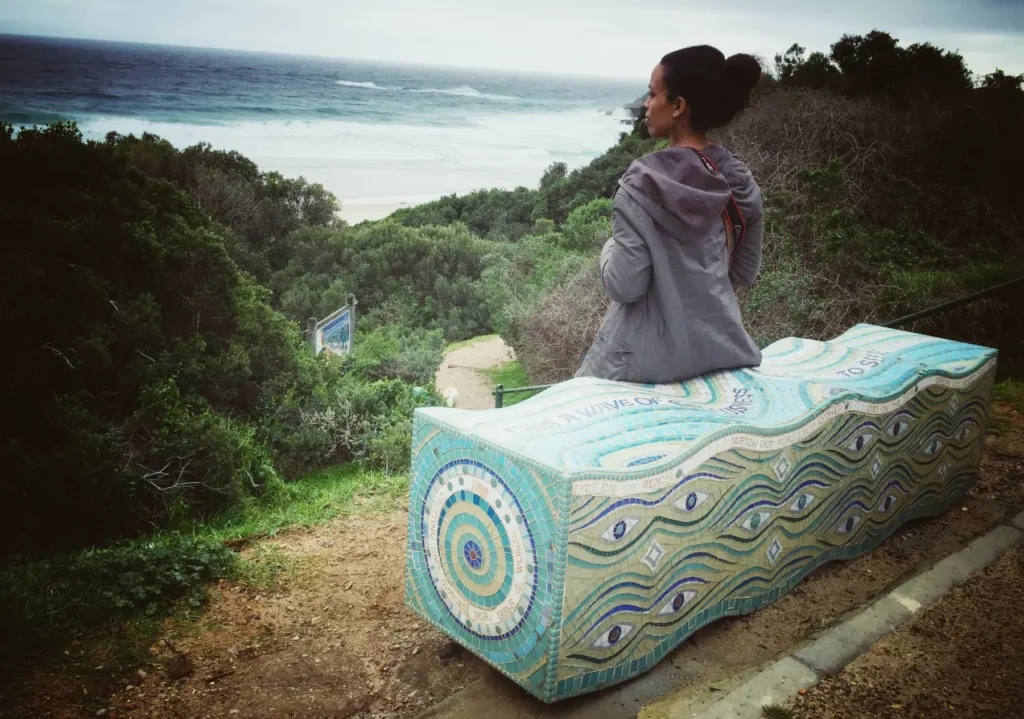
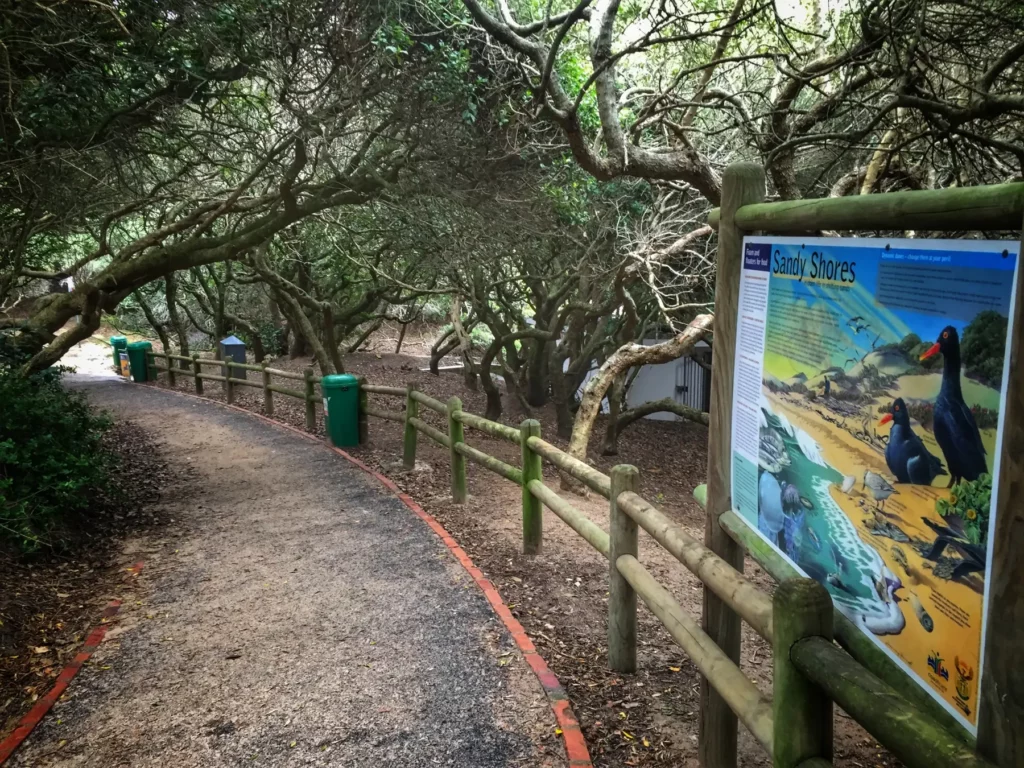
We stop for a quick photograph on the roadside where there would normally be groupings of craft sellers flogging hugely cumbersome wooden giraffes to passing tourists. I often have a quite giggle to myself when I see these poor humans trying to get their new giraffe sculpture onto the bubble wrap machine at the airport. I can only imagine they regret the impulsive drive to get the largest one they can find when it comes time to check these things in on your homebound flight. The impending rain has driven everyone away, even the coffee vendors, which is a pity. We are bound for Camps Bay though, so not all is lost in the hunt for something warm and nourishing and I know of a little join along the corner of Bakoven called Baked Bistro that has wraps and coffee to die for. Bakoven is a real gem of a secret little area, filled with small, sweet beaches and the NSRI station tucked between bungalows. It’s main beach, Big Beach, was originally a small fishing harbour for the snoek, mackerel and cob local fishermen that needed a sheltered inlet along the shores.
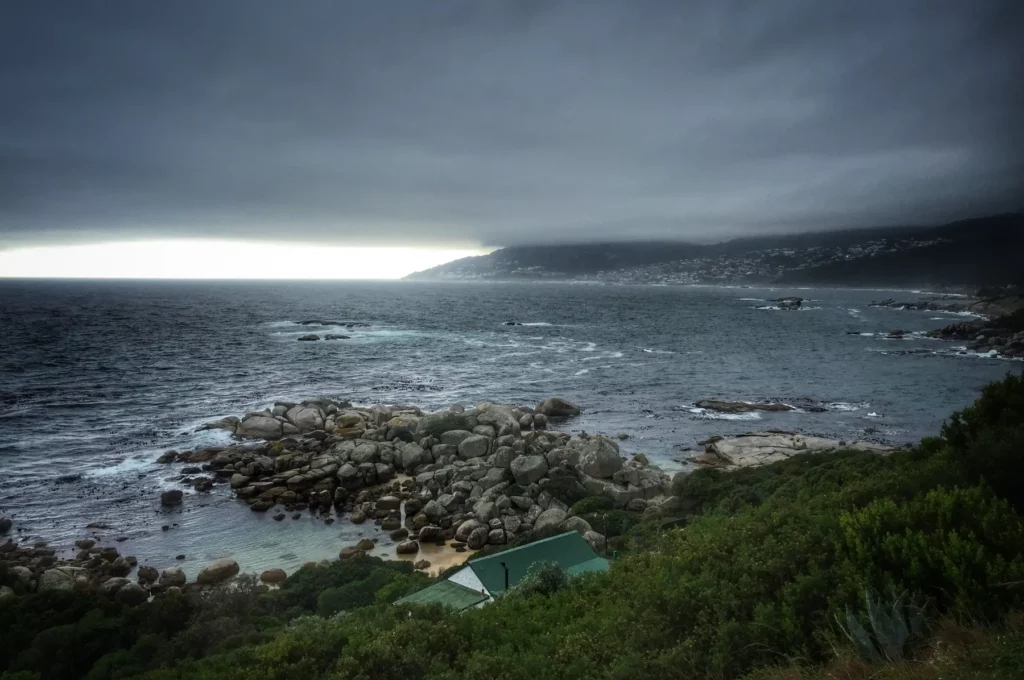
Victoria road hugs the shoreline, the houses and emerging flats of Bantry bay at the foot of the Table Mountain National Park, large satisfying spaces of unique Cape fynbos flora and fauna between. Cape Fynbos, meaning ‘fine bush’ grows in an almost 200km belt from There are 9,000 species occurring in the cape area, and if you glance up at Table Mountain from the sandy shores of Camps Bay you are most likely looking at nearly 2,000 different species there alone. The first residents along Camps Bay were San and the Khoi before they were all but wiped out by smallpox. From 1652 onwards the 12 Apostles and Table Mountain were covered in thick forest and used as hunting ground for the governor of the Cape. In the 1800’s no one much cared about this neck o the mountain, it was actually originally named Schoenmaker’s Gat after an old shoemaker who, as the sole resident of the area, would mend passing farmers shoes. How times have changed. The beautiful wind free beaches could not be ignored and over the years holiday makers have turned this small little bungalow scattered cove into the home of some of Cape Towns most affluent and glitzy. Mighty mansions line the mountainside and a promenade filled with restaurants and bars often packed with the those wanting to see and be seen, runs parallel to the Atlantic Ocean.
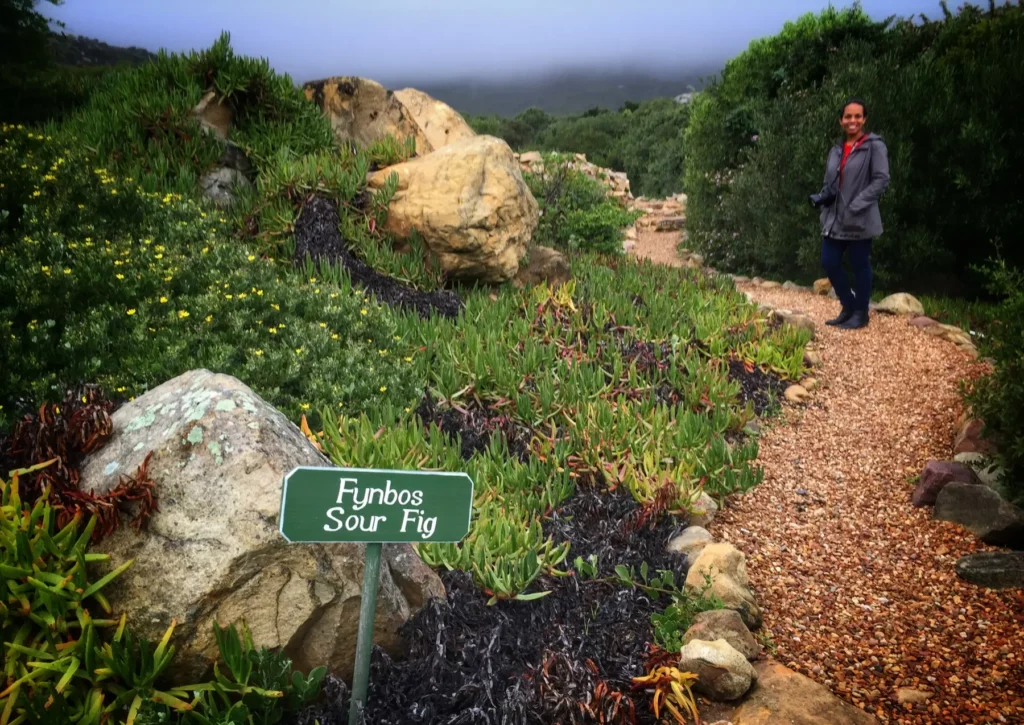
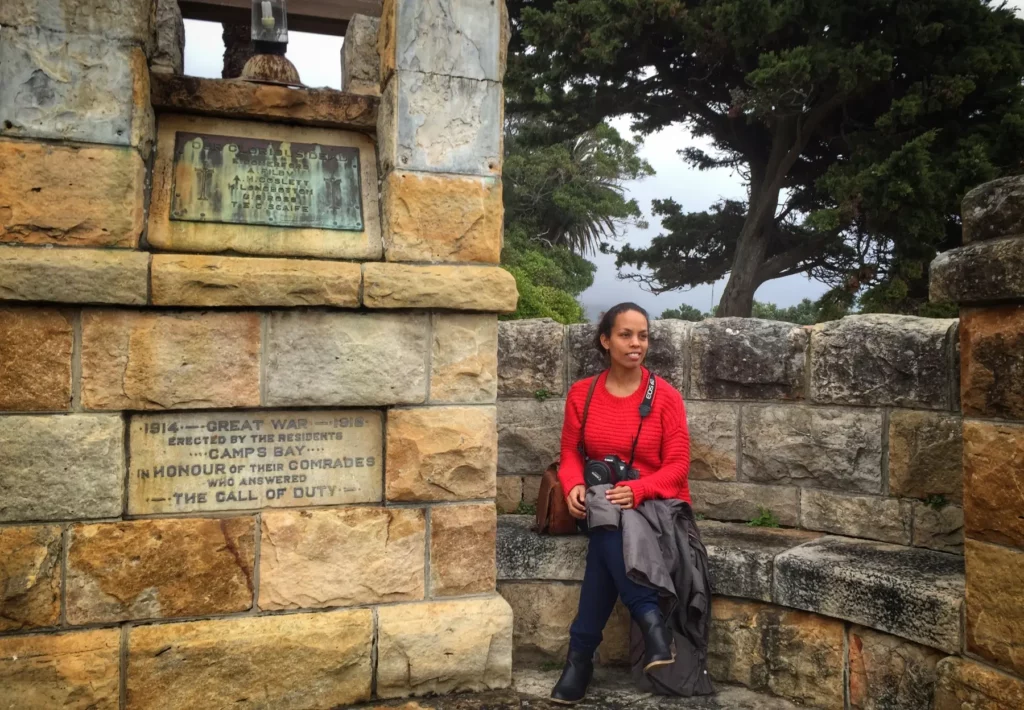
Then there is the wide stretching beach of Camps Bay, stretching out towards Sea Point , the curves of Clifton’s 1 to something or the other beaches peaking out from the rocks. I am forever getting confused whether it starts with Clifton 4th beach or 1st. There’s a big difference in the types of Clifton’s; one being a beach with far too much exercise and flexing muscles, one dog friendly, one for the ridiculously good looking and one for families. Get them mixed up and you could land up dodging beach bats in your one piece surrounded by models when all you want is to have a quite dip in the ocean. I digress, what I really love about the ocean in winter is that it is somehow actually a little bit warmer than in summer. If you wait for a passing squall to clear and the winds to change form north to south the normally mind numbingly icy cape waters rise by a few degrees, a clear ocean inviting you in for perfect surfing session or Sup paddle. Glen beach is a big favourite amongst the surfing crowd when the wave turns on, and because it’s winter you wont have to fight the crowds for a spot in the break. Winter also ushers in whale season, you can often spot pods of dolphins playing in the waves off the beach and whales spouting water into the air close to the shoreline.
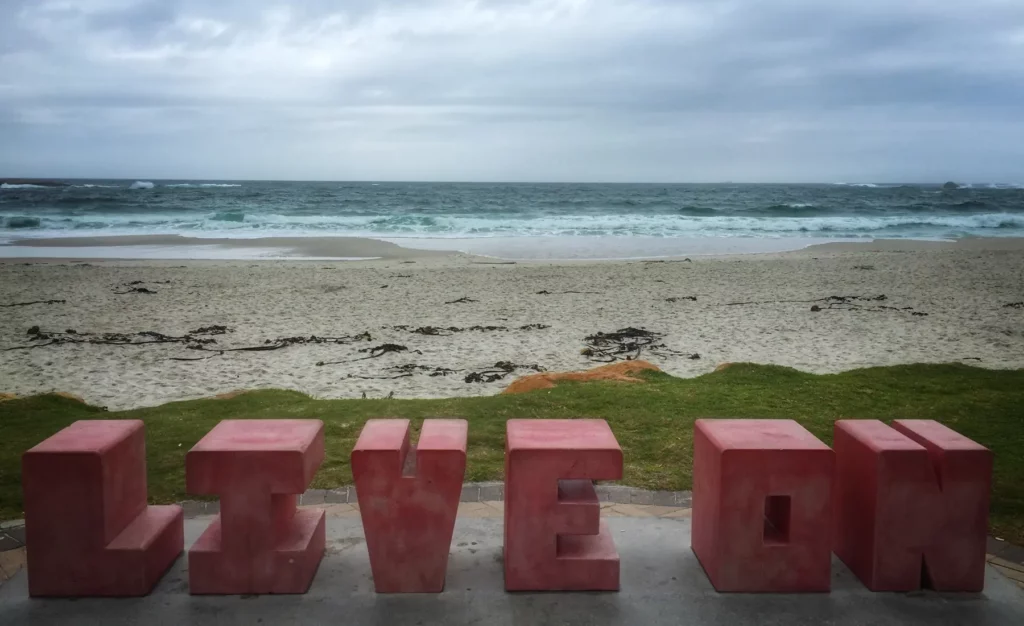

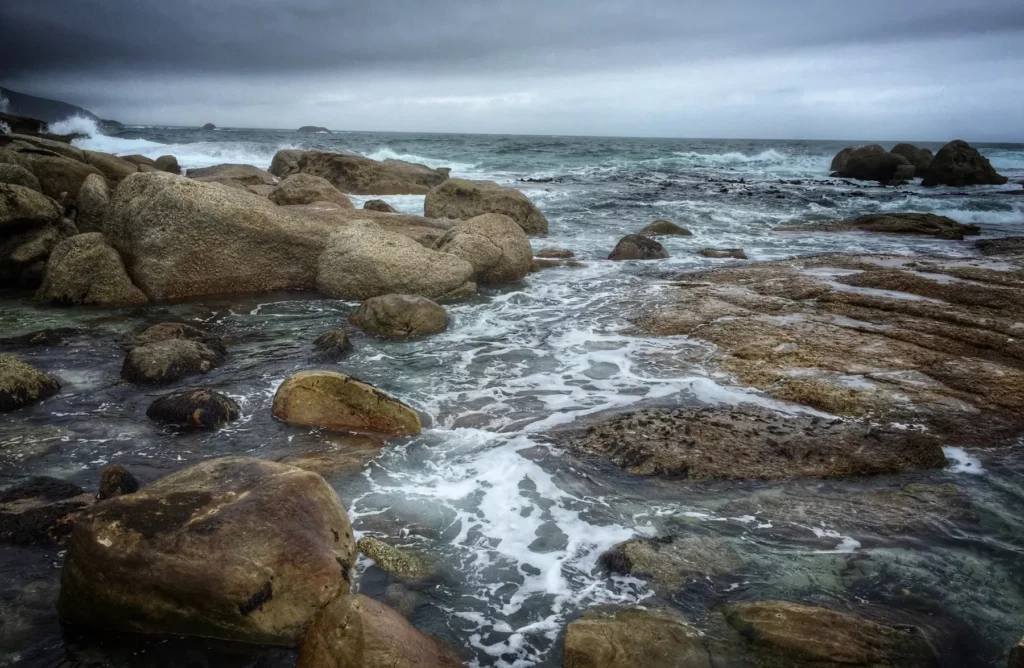
We are only 18km for the city centre and we could be in another world. I think that’s the beauty of the Cape, you always have coves, valleys and hidden corners to explore. I’ve been here a mere 6 years and I still get amazed every time I make a new find. Summer may be for the beach bunnies, bronzed bodies and wine clinking by the masses, but winter is still my favourite season. The city slows down; there is no need to rush off anywhere to beat the queue, traffic or the hunt for a decent parking space. Sure its cold, that’s kind of obvious, but nothing can beat the invigoratingly fresh feeling of a brisk walk on the beach and then a duck into a warm café with the fire radiating heat, peeling away those layers of scarves and beanies and slugging down some fortifying wine. It’s the perfect way to explore the city without the hustle and bustle and stomp in some puddles armed with bright coloured gumboots.
The rain rolls in over the beach in splattering sheets. It’s only been a few hours of exploring this deeply historical and beautiful part of the coastline that forms part of Cape Town. it’s not hard to see why tourists flock here in summer. But do yourself a favour and give winter a shot, it might surprise you.
This blog post was part of #CheapFligthsExplorers but as always, the opinions are all my own, as with all the photos.

